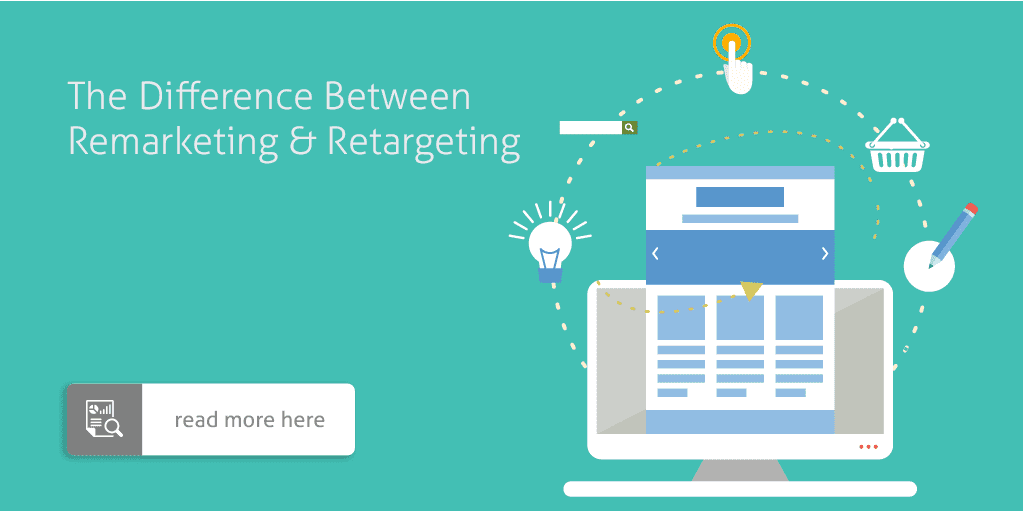With Pinterest launching inaugural retargeting tools, now is a good time for advertisers to reevaluate their own policies around remarketing vs retargeting.
These campaigns are a point of contention between modern consumers and advertisers. Poorly executed marketing campaigns cause consumers to feel that advertisers are invading their privacy and inspire screeds like Forbes’ article titled: “Retargeting – The Advertising Strategy For Idiots.”
However, advertisers know that good remarketing vs retargeting plans are one of the most cost-effective marketing strategies available.
Studies have found that the click-through rate with retargeting is three to 10-times more effective than the average CTR in most industries. With this, advertisers and publishers must carefully deploy and calibrate these campaigns so they can hit the sweet spot between enticing potential consumers without annoying them.
Launching a Retargeting Campaign in 2018
Most consumers know now that the ads they see from Bing, Google and other third-party platforms are tied to their internet browsing habits.
The key to marketing to these modern consumers is to provide a nudge that is formatted to look like a subtle reminder regarding their previous visit to the advertiser’s site or email from the advertiser.
To use retargeting as a prospecting tool, advertisements should target shoppers based on their internet searches, interactions with client partners and the consumption of content related to the advertised products.
One study found that 53 percent of consumers found retargeting advertisements helpful and were four times more likely to purchase the product. However, if they saw the ad four or more times, it became intrusive. The more frequently an ad is displayed, the more aggravating it can be to consumers.
To avoid advertising backlash and increase conversions, retargeting campaigns must be sophisticated.
Companies must create progressive retargeting advertisements that offer a mixture of traditional advertising, product information and incentives to create a sense of urgency.
Below are four techniques that succeed with consumers:
- Use seasonal campaigns. Advertisers should retarget consumers who buy seasonal items, such as Mother’s Day flowers, every year just prior to the anniversary of their purchase date.
- Pair retargeting ads with related publishers. Consumers find it clever and helpful if retargeting ads closely match the subject matter of the publisher’s website. They’re less likely to respond if there’s no connection between the two.
- Employ geo-targeting for brick-and-mortar stores. Consumers don’t want to be bothered with advertisements they can’t use, and it’s a waste of valuable advertising dollars.
- Limit the retargeting window. Some consumers may purchase the advertised item at a brick-and-mortar store. Advertisers should taper their retargeting efforts after a few weeks to prevent aggravating existing customers.
Modern Remarketing vs Retargeting Strategies
While many publishers confuse the terms remarketing vs retargeting, professional marketers use the phrase remarketing to refer to email campaigns.
While retargeting advertising can get caught in a consumer’s ad blocker or be missed altogether, email campaigns have a better likelihood of being opened. The trade-off is consumers may immediately unsubscribe to future emails if the advertiser cannot offer useful information in an engaging way.
Advertisers should consider remarketing emails for abandoned shopping carts, abandoned checkouts and post-purchase ordering and relationship building. Email copy should focus on creating an accessible tone that sounds like it’s written by an individual person, not a business entity.
Remarketing emails work best when the marketer creates a sense of urgency.
A remarketing case study found that a branded-only remarketing email increased uplift by 10 percent, but a remarketing email with a five-percent discount that expired within 72 hours increased uplift to almost 27 percent. That same case study found that advertisers that used a five-percent discount with a 48-hour expiration date achieved the best possible results: a 40.43-percent uplift.
To be successful in 2018, companies must consider how their remarketing and retargeting strategies function as a service to consumers.
Modern shoppers understand that businesses use their internet traffic to craft specialized marketing campaigns. Whether they find these tactics helpful or intrusive depends on the skill of the marketers involved.


